Abstract
Cultured soybean (Glycine max, Kanrich variety) cells grow with 25 mm urea as the sole nitrogen source but at a slower rate than with the Murashige and Skoog (MS) (Physiol. Plant. 15: 473-497, 1962) nitrogen source of 18.8 mm KNO3 and 20.6 mm NH4NO3. Growth with urea is restricted by 18.8 mm NO3−, 50 mm methylammonia, 10 mm citrate or 100 μm hydroxyurea, substances which are much less restrictive or nonrestrictive in the presence of ammonia nitrogen source. The restrictive conditions of urea assimilation were examined as possible bases for selection schemes to recover urease-overproducing mutants. Since urease has higher methionine levels than the soybean seed proteins among which it is found, such selections may be a model for improving seed protein quality by plant cell culture techniques.
Callus will not grow with 1 mm urea plus 18.8 mm KNO3. Urease levels decrease 80% within two divisions after transfer from MS nitrogen source to 1 mm urea plus 18.8 mm KNO3. Hydroxyurea is a potent inhibitor of soybean urease and this appears to be the basis for its inhibition of urea utilization by callus cells.
Stationary phase suspension cultures grown with MS nitrogen source exhibit trace or zero urease levels. Soon after transfer to fresh medium (24 hours after escape from lag), urease levels increase in the presence of both MS or urea nitrogen source. However, the increase is 10 to 20 times greater in the presence of urea. NH4Cl (50 mm) lowers urease induction by 50% whereas 50 mm methylammonium chloride results in more drastic reductions in urea-stimulated urease levels. Citrate (10 mm) completely blocks urease synthesis in the presence of urea.
Ammonia and methylammonia do not inhibit soybean urease nor do they appreciably inhibit urea uptake by suspension cultures. It appears likely that methylammonia inhibits urea utilization in cultured soybean cells primarily due to its “repressive” effect on urease synthesis.
Citrate does not inhibit urease activity in vitro and exhibits only a partial inhibition (0-50% in several experiments) of urea uptake. It appears likely that the citrate elimination of urease production by cultured soybean cells is due to its chelation of trace Ni2+ in the growth medium. Dixon et al. (J. Am. Chem. Soc. 97: 4131-4133, 1975) have reported that jack bean (Canavalia ensiformis) urease contains nickel at the active site.
Full text
PDF
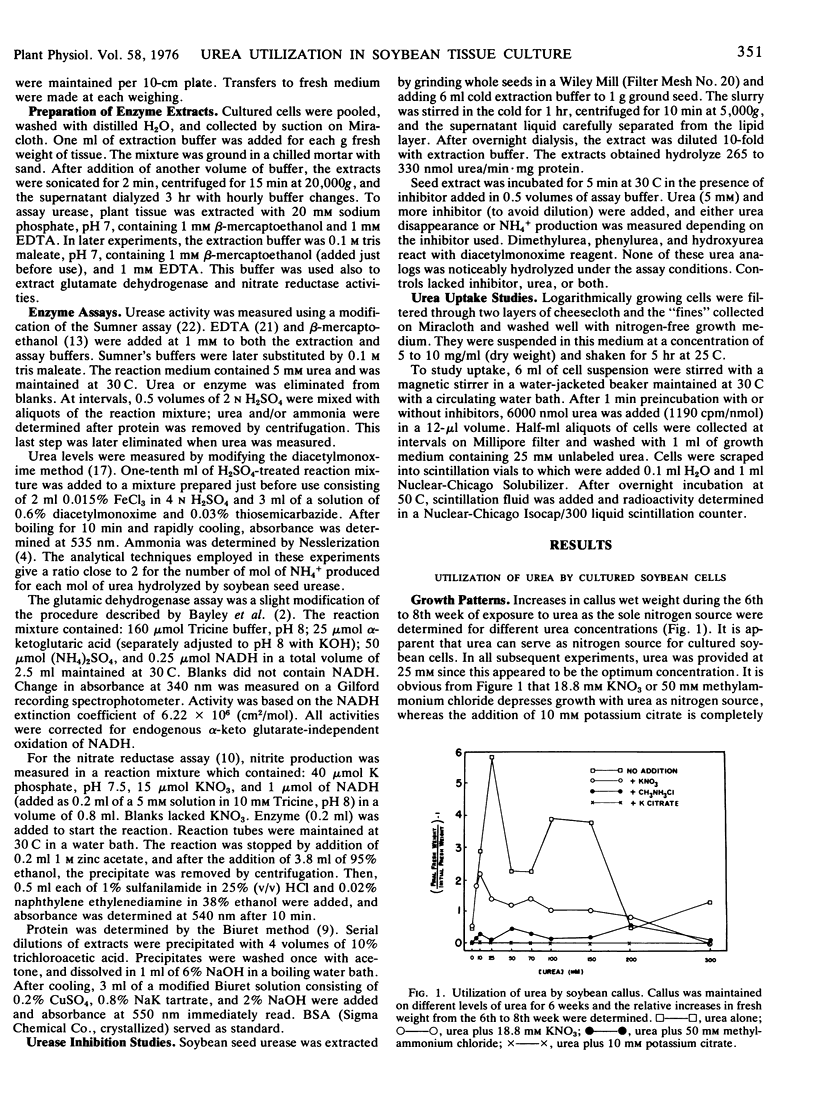
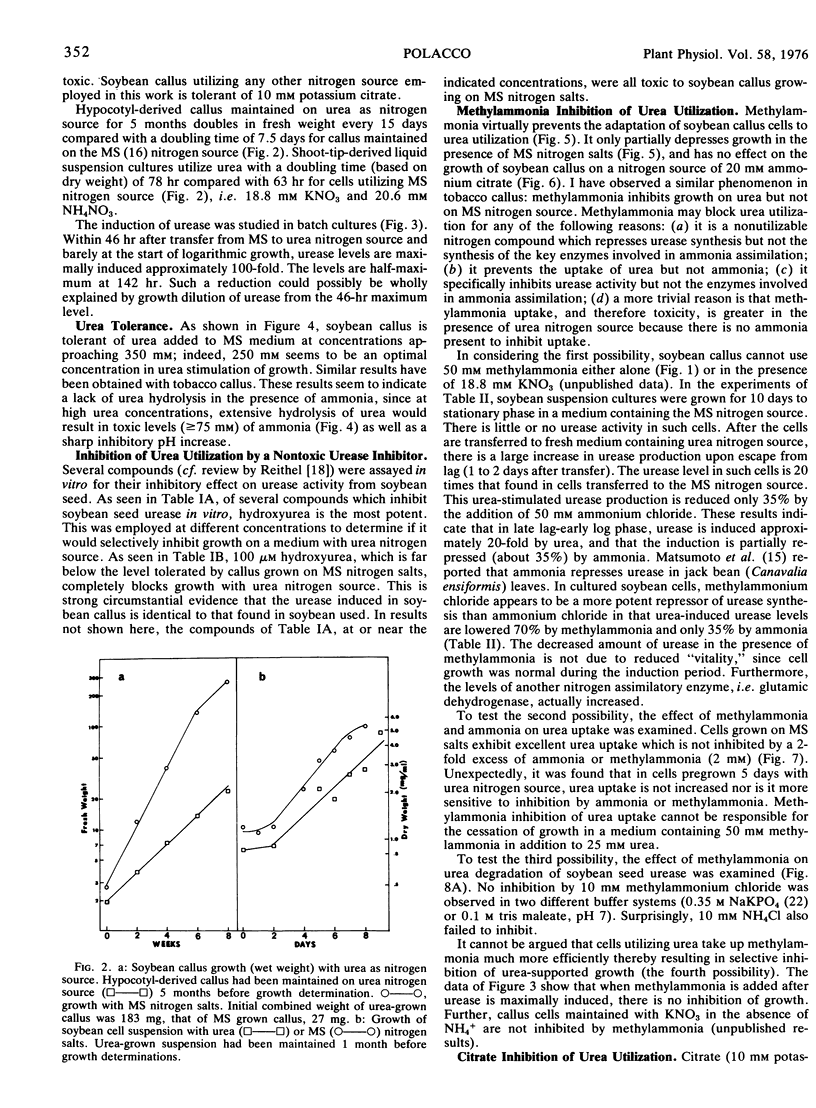
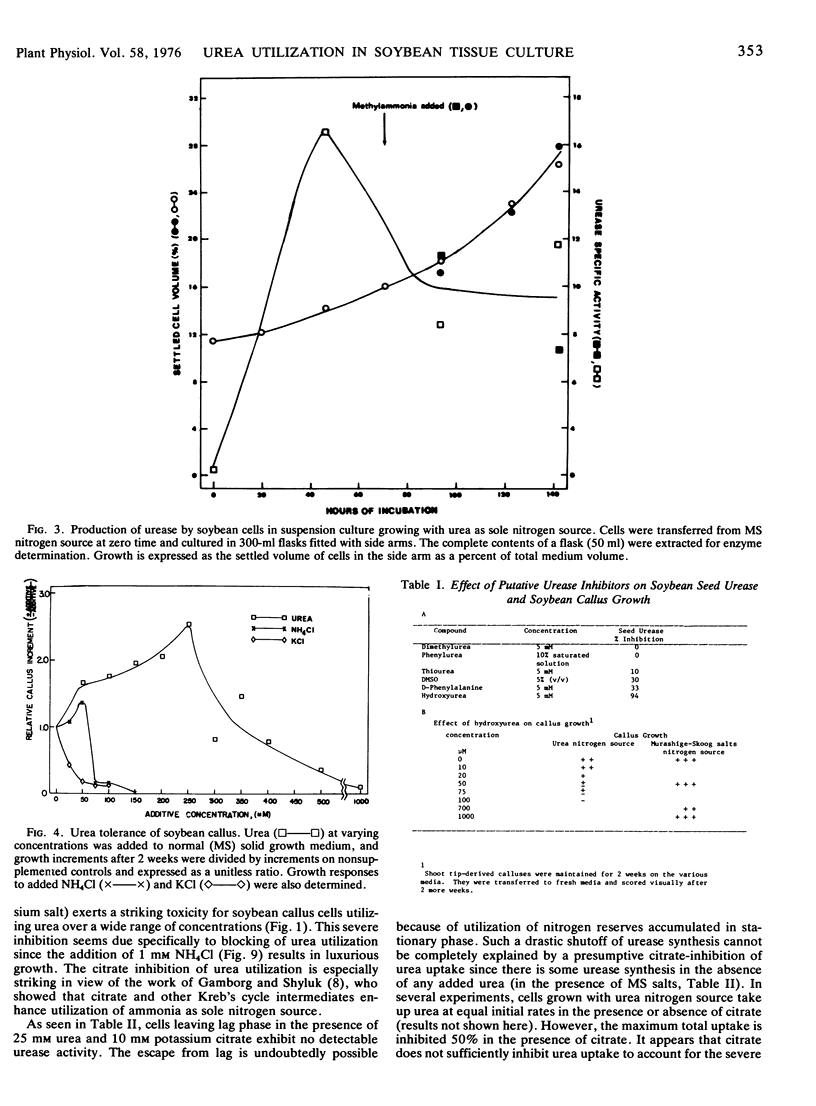
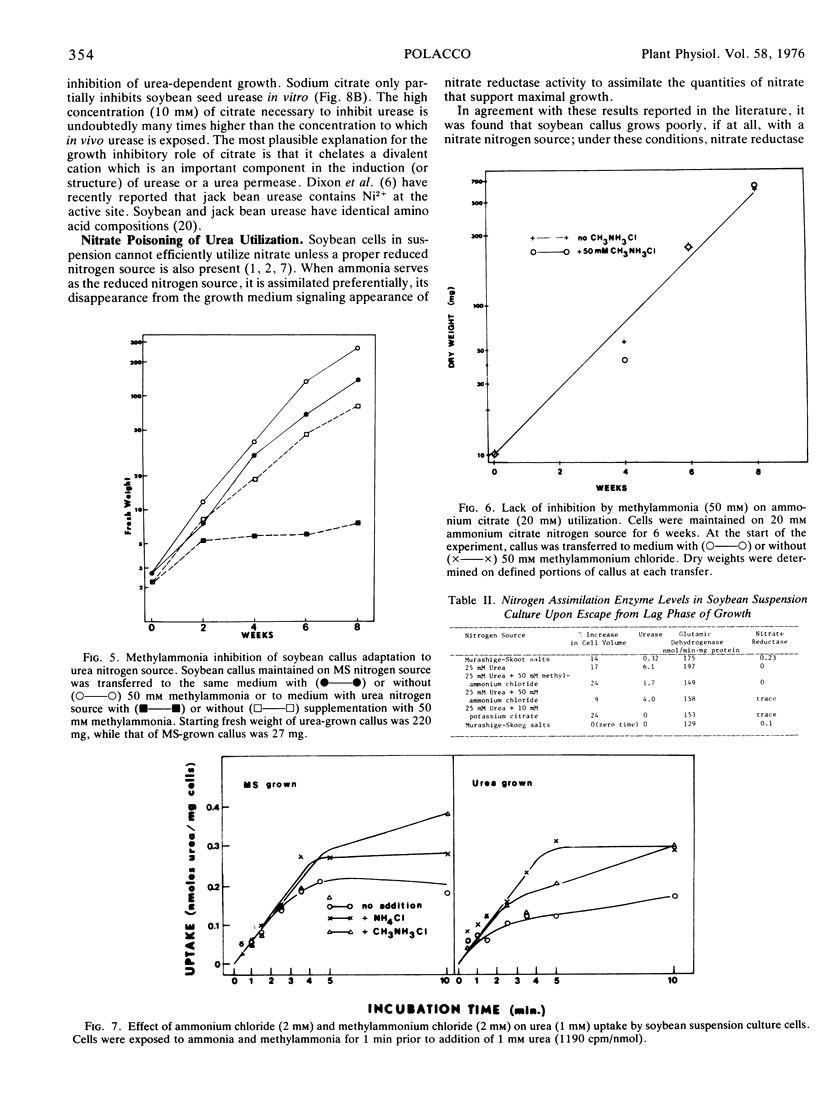
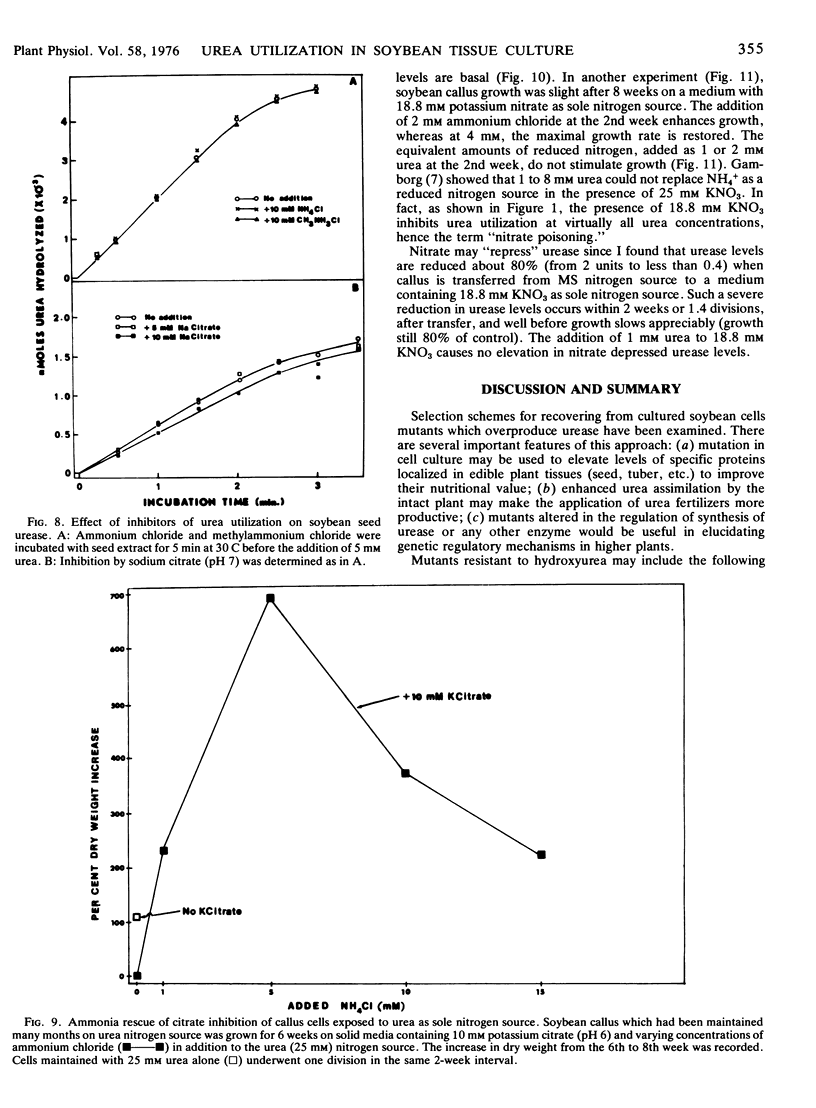
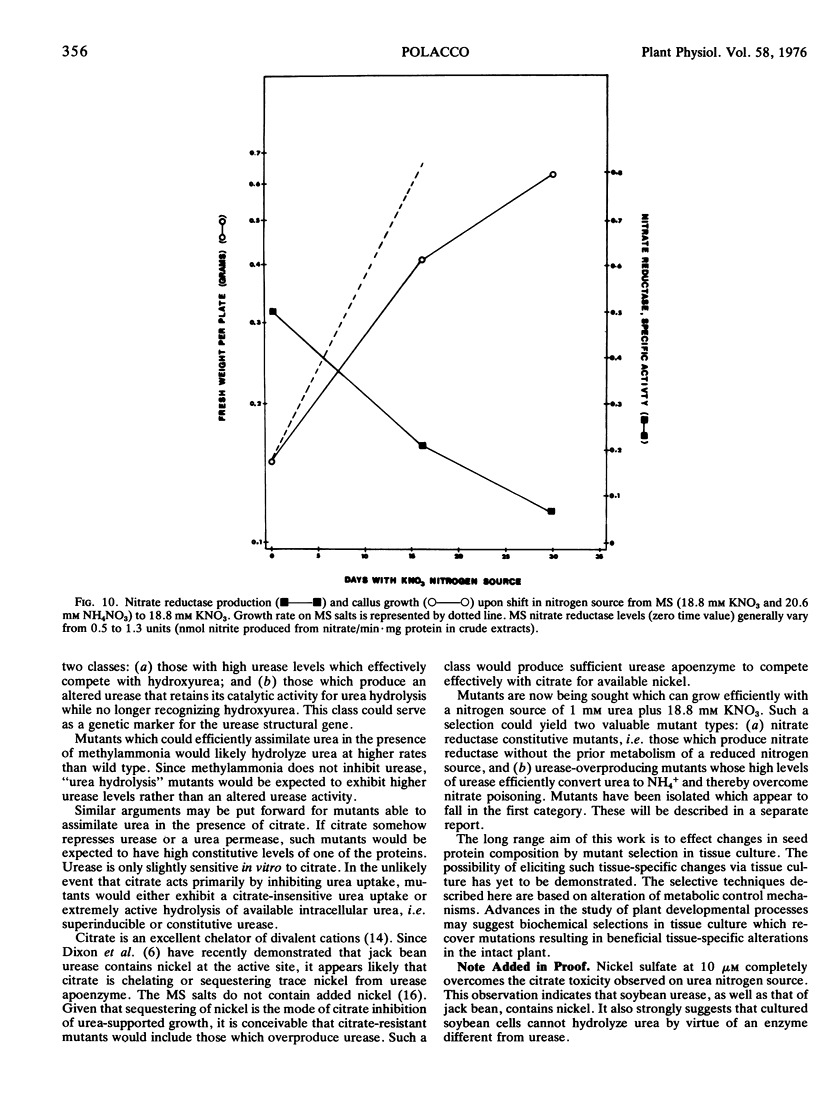
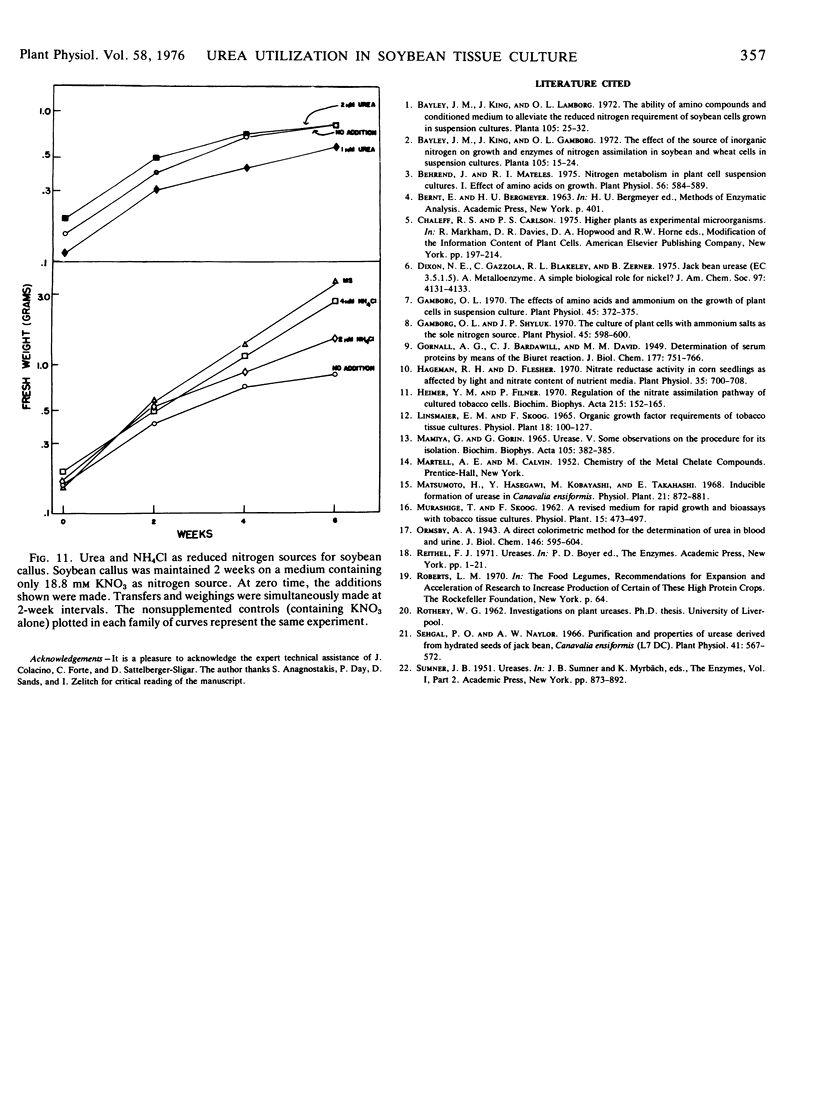
Selected References
These references are in PubMed. This may not be the complete list of references from this article.
- Behrend J., Mateles R. I. Nitrogen metabolism in plant cell suspension cultures: I. Effect of amino acids on growth. Plant Physiol. 1975 Nov;56(5):584–589. doi: 10.1104/pp.56.5.584. [DOI] [PMC free article] [PubMed] [Google Scholar]
- Dixon N. E., Gazzola T. C., blakeley R. L., Zermer B. Letter: Jack bean urease (EC 3.5.1.5). A metalloenzyme. A simple biological role for nickel? J Am Chem Soc. 1975 Jul 9;97(14):4131–4133. doi: 10.1021/ja00847a045. [DOI] [PubMed] [Google Scholar]
- Gamborg O. L., Shyluk J. P. The culture of plant cells with ammonium salts as the sole nitrogen source. Plant Physiol. 1970 May;45(5):598–600. doi: 10.1104/pp.45.5.598. [DOI] [PMC free article] [PubMed] [Google Scholar]
- Gamborg O. L. The effects of amino acids and ammonium on the growth of plant cells in suspension culture. Plant Physiol. 1970 Apr;45(4):372–375. doi: 10.1104/pp.45.4.372. [DOI] [PMC free article] [PubMed] [Google Scholar]
- Hageman R. H., Flesher D. Nitrate Reductase Activity in Corn Seedlings as Affected by Light and Nitrate Content of Nutrient Media. Plant Physiol. 1960 Sep;35(5):700–708. doi: 10.1104/pp.35.5.700. [DOI] [PMC free article] [PubMed] [Google Scholar]
- Heimer Y. M., Filner P. Regulation of the nitrate assimilation pathway of cultured tobacco cells. II. Properties of a variant cell line. Biochim Biophys Acta. 1970 Jul 21;215(1):152–165. doi: 10.1016/0304-4165(70)90398-3. [DOI] [PubMed] [Google Scholar]
- Mamiya G., Gorin G. Urease. V. Some observations on the procedure for its isolation. Biochim Biophys Acta. 1965 Aug 24;105(2):382–385. doi: 10.1016/s0926-6593(65)80165-5. [DOI] [PubMed] [Google Scholar]
- Sehgal P. P., Naylor A. W. Purification and Properties of Urease Derived from Hydrated Seeds of Jack Bean, Canavalia ensiformis (L) DC. Plant Physiol. 1966 Apr;41(4):567–572. doi: 10.1104/pp.41.4.567. [DOI] [PMC free article] [PubMed] [Google Scholar]


